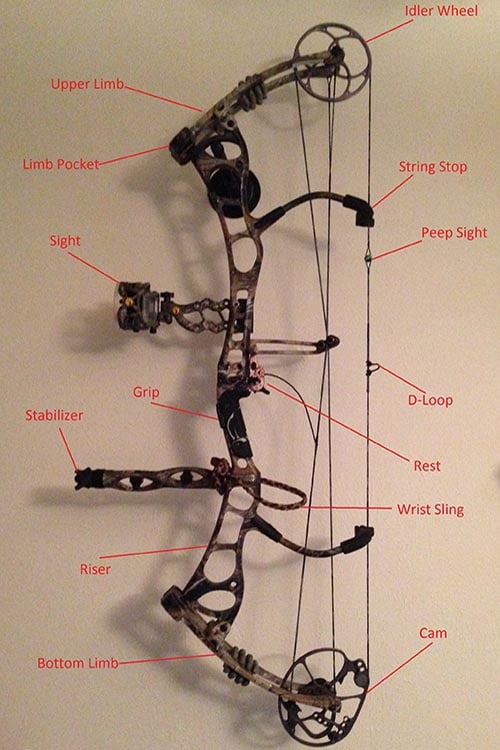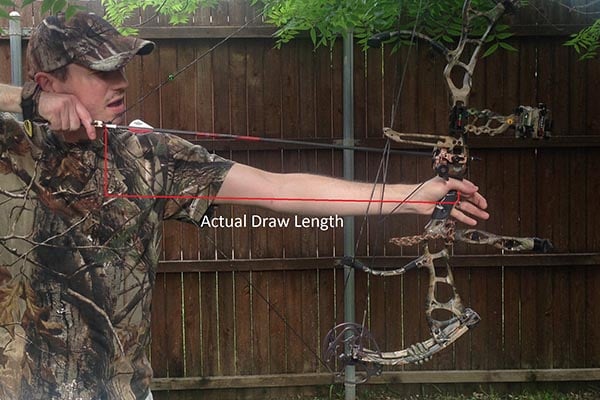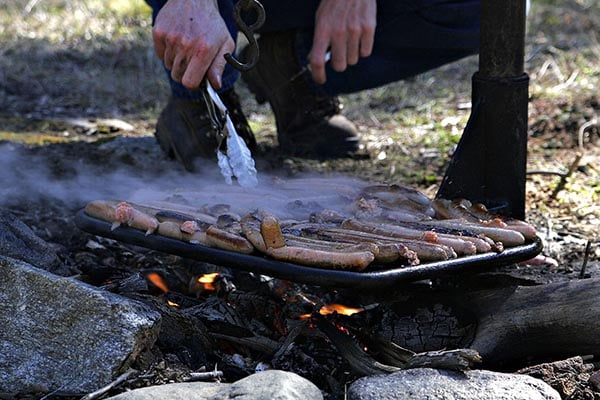Last Updated on
By Rob Boyle
Continued from How To Select A Compound Bow – Basics.
Welcome back to our second segment on how to select a compound bow! Last time we discussed a bit about the different types of bow manufacturers out there, and we talked about a few of the terms used in archery to describe your bow. We’ll continue this week with some more important terms you’ll need to know when purchasing your first bow! Welcome to the addiction!
Draw Length – (DL)
Draw length is an extremely important factor when selecting a bow. Most of the newer bows have draw lengths that are adjustable, (some need a bow press to adjust, some do not) from 24 inches all the way up to 30 inches. The draw length of an archer is the distance between the frontmost part of the bow (where the bowhand rests) measured to the nocking point (the furthest point on the string when the bow is at full draw). This draw length is specific to each individual. For instance, a seven foot tall basketball player might have a draw length that exceeds 30 inches, while a teenage girl who is five feet tall might have a draw length that is about 23 inches. This is a huge difference in draw length when choosing a bow. If the draw length the bow is set at is too long for you, your form will suffer and you will tend to lean back, which will affect your accuracy negatively. Similarly, if your draw length is too short, your form will suffer and you will not feel comfortable shooting the bow, and again, your accuracy will suffer.
There are two ways to get a number, in inches, for your draw length. For the first way, you will need an assistant who can measure with a tape measure as you hold a bow in your hand, draw the bow, and come to full draw (WARNING: Never draw a bow without an arrow nocked. If you slip or let go, you will dry fire, which can completely destroy your bow and void the manufacturer’s warranty, not to mention it could cause serious harm to yourself and others around you).
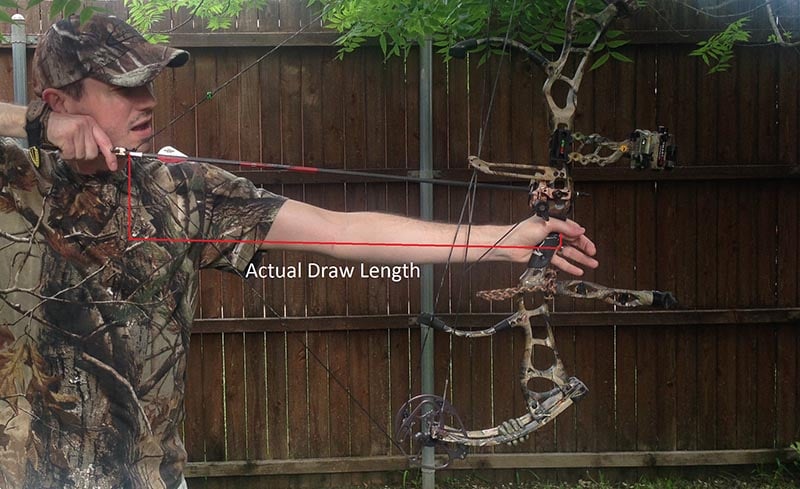
The second way does not necessitate an actual bow, so you can figure out your draw length before even buying the bow! Stand with your arms out to the side, have an assistant measure the distance between your fingertips, and then divide by 2.5. That’s it. For instance, the distance between my fingertips is 72 ¼” so when I divide that by 2.5 I get 28.9 inches. Typically draw lengths can be adjusted in half inch increments, so I would round my draw length up to 29 inches. When you go to purchase your new bow, make sure you know your draw length and that your bow is capable of being set to your particular length. Otherwise, shooting it will be no fun at all.
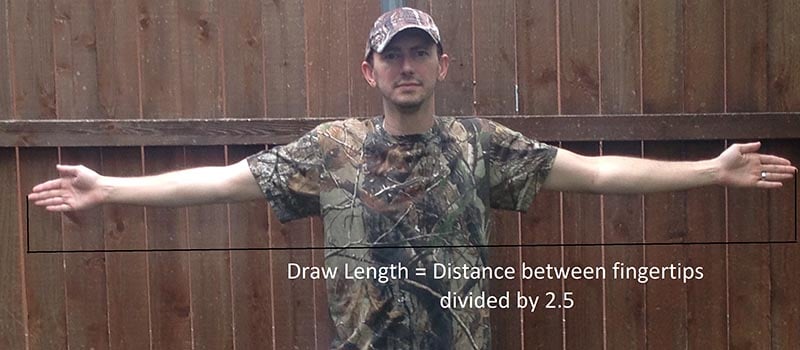
Draw Weight/Poundage
Draw weight (or poundage) is the maximum amount of weight that you will need to be able to pull to get the bow to full draw. Many newer bows have adjustable draw weights. You can adjust the draw weight of your bow by loosening or tightening the limb bolts on the bow.
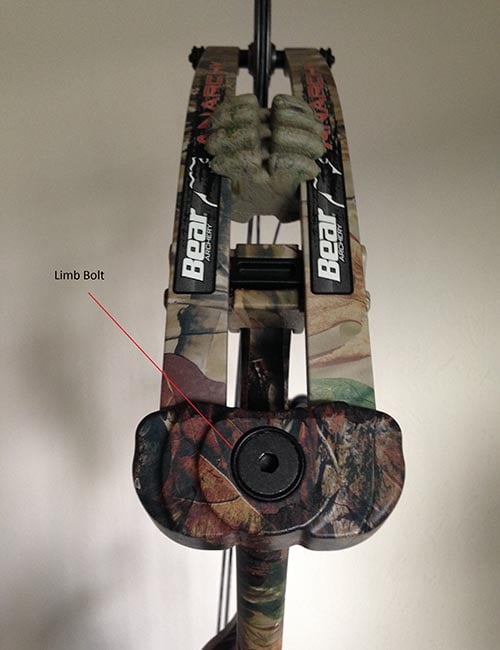
The more you loosen the limb bolt, the less weight you will be drawing. The more you tighten the limb bolt, the more weight you will be drawing. Most bows have a maximum draw weight, typically set in 10 pound increments. For instance, the most common draw weights for bows go from 40 – 50 pounds or 50 – 60 pounds. However, they make bows that go up to 70 pounds and they make bows for children and women that go down to 15, 20 or 30 pounds. Seventy isn’t really necessary anymore as it’s been shown that modern bows provide enough energy in the arrow to humanely kill any big game animal in North America without turning the draw weight way up to 70 pounds. The more draw weight you have, the faster your arrow will go. The less draw weight, the slower it will go.
Let Off
Now you must be thinking to yourself “60 pounds?? There is NO WAY I can hold 60 pounds! Not even 50!”. And you’d be right! That’s a lot of weight to hold! However, never fear, because let off is your friend! Let off refers to the ability of the bow and its cam system to reduce the amount of weight you are holding when you come to full draw. A lot of bows these days have 70%, 75% or even 80% let off. Let’s say that a bow claims to offer 80% let off and you set the bow at a maximum peak weight of 55 pounds. This means that at one point during the draw cycle, you will be pulling 55 pounds, but only for a second. When you come to full draw, with 80% letoff, you’ll only be holding 11 pounds. That’s much more comfortable, especially if you’re waiting at full draw for the whitetail deer or bull elk to look down again before you loose an arrow! So how do we come to that calculation? Well, multiply 55 pounds by 0.8 (80%). That gives you 44 pounds. That’s the amount, in pounds, the bow is “letting off” so you don’t have to hold the entire weight. 55 minus 44 equals 11…the amount of pounds you’ll be holding at full draw. It is much more comfortable.
Brace Height – (BH)
The final term we’ll tackle in this two part article is known as brace height. This measurement is the distance between the bowstring and the deepest part of the grip when the bow is not drawn.
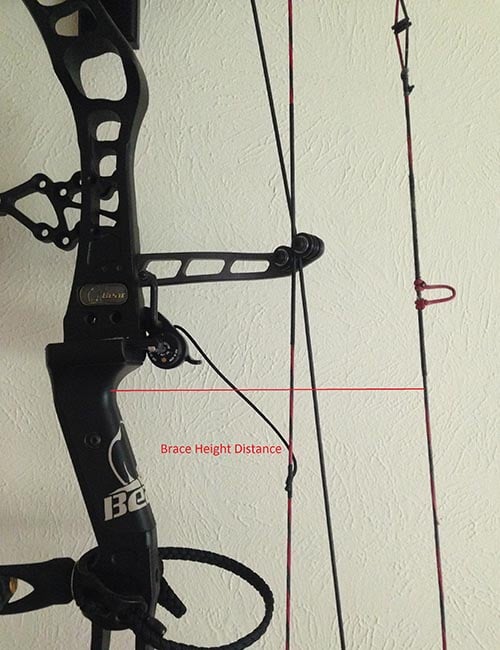
This distance is always set by the manufacturers, and it should not be adjusted if you want optimum performance out of your bow. When you hear bow manufacturers and other archers talking about the “forgiveness” of their bow, they are talking about how the bow exploits or reduces the archer’s mistakes in form and release, and this is directly related to the brace height. Generally, the shorter the brace height, the less forgiving the bow is to shoot. But, it will also shoot faster. The longer the brace height, the more forgiving the bow will be to shoot, but it will shoot slower. So, in order to get more speed out of your bow, you need one with a shorter brace height. The “sweet spot” that most manufacturers have decided upon as being an optimum combination of forgiveness and speed is a brace height of 7 inches. You’ll see a lot of bows with this brace height. There are “speed bows” that have brace heights under 6 inches. For instance, PSE makes the Full Throttle bow, an arrow screamer if there ever was one, with a 5 ¼” brace height. That is a short brace height! I have never personally shot one of these bows, but I imagine with that short of a brace height, you’d need really good form and a lot of previous practice. For any beginner, I would recommend a brace height of 7 inches.
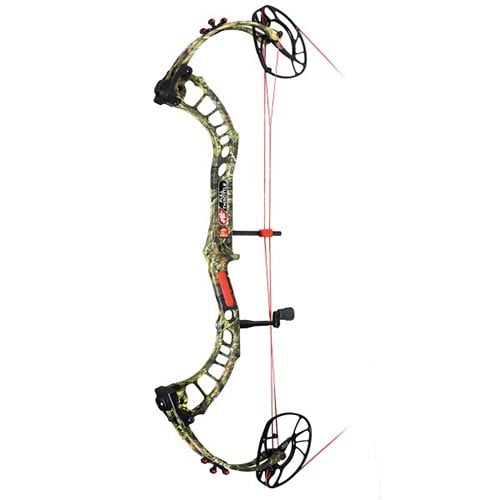
Well, that’s it for this week’s terminology tutorial. Hopefully after reading these two articles you’ll have enough beginner information to head out to your local bowshop, or Gritroutdoors, located in Arlington, Texas, and go start shooting some bows! Remember, the bow will find you. You’ll know which bow you’ll want to buy after shooting a few different types. And don’t forget, the cost of getting into archery isn’t just the compound bow. At a minimum, you will have to buy arrows, a release, a target (unless you want to shoot into some hay bales), a bowsight and a rest. You’ll also have to get your pro shop to set your draw length, draw weight, install your peep sight, and set up your d-loop.
Take some time at the pro shop to get comfortable shooting the arrows. Take some lessons. You’re in this for the long haul, and so am I, to help you out.
Over the next several months we’ll cover various topics on archery and bowhunting: from gear, to form, to tournaments, to hunting, to product reviews, and much, much more. Stay tuned for more great information! Happy Shooting!
